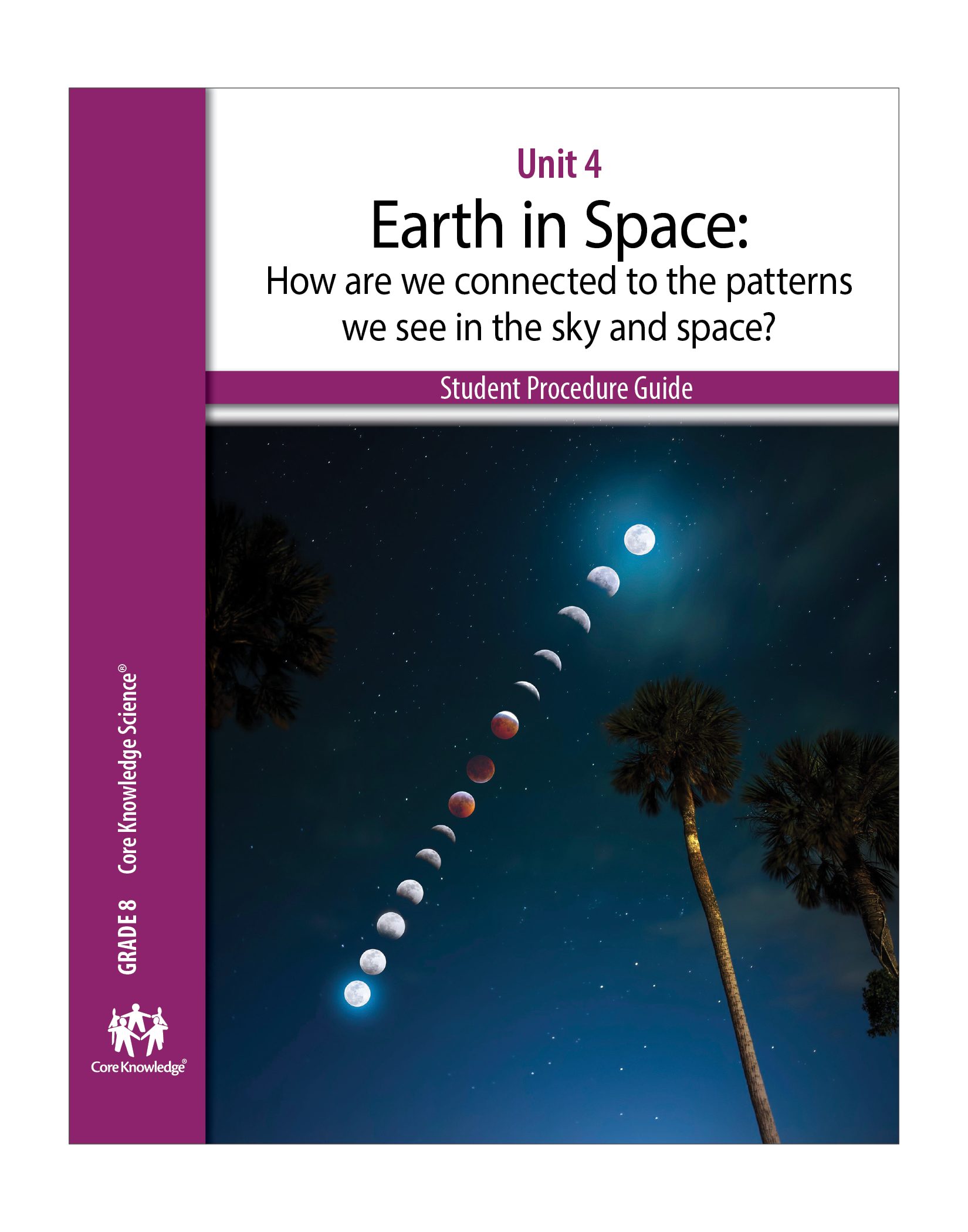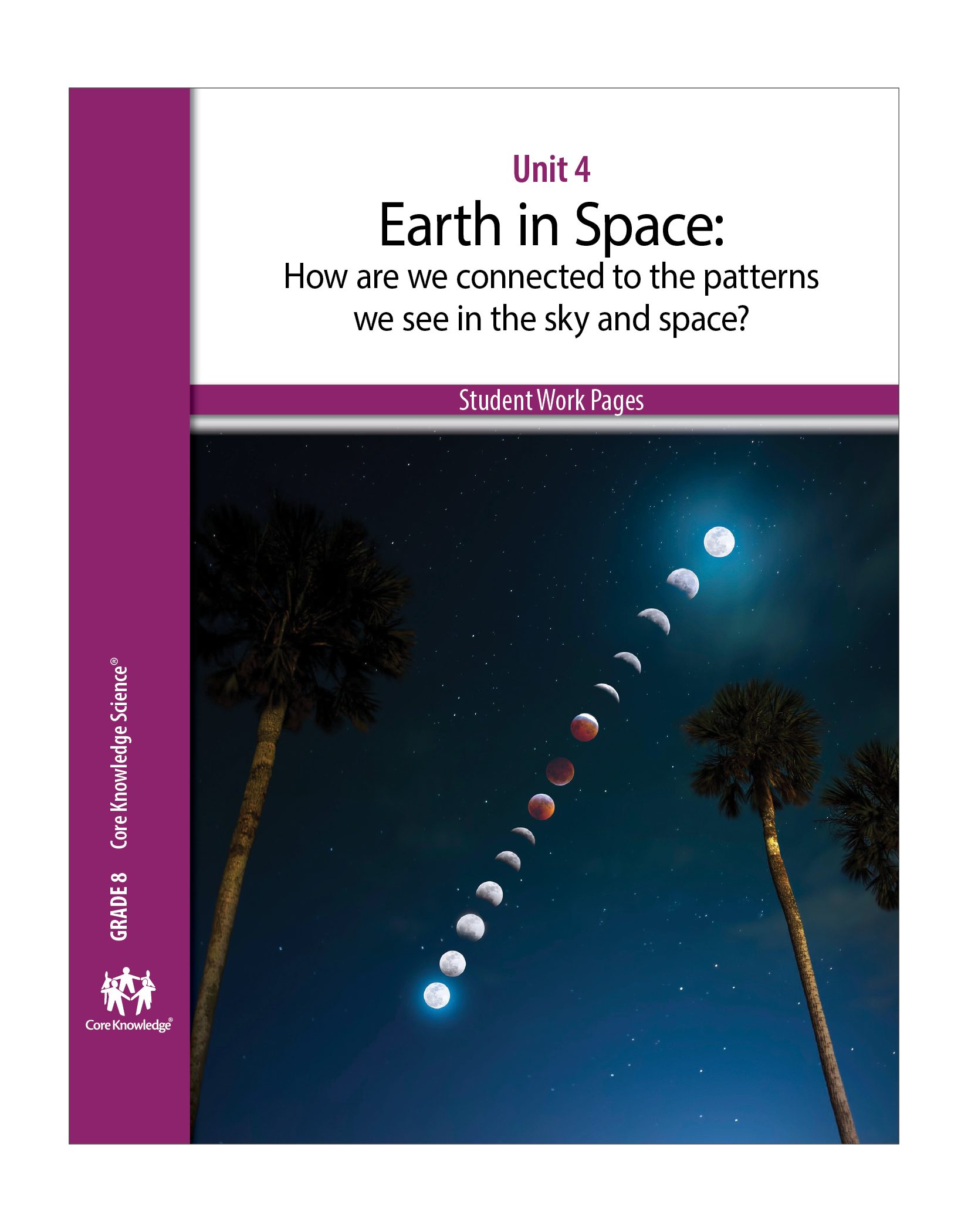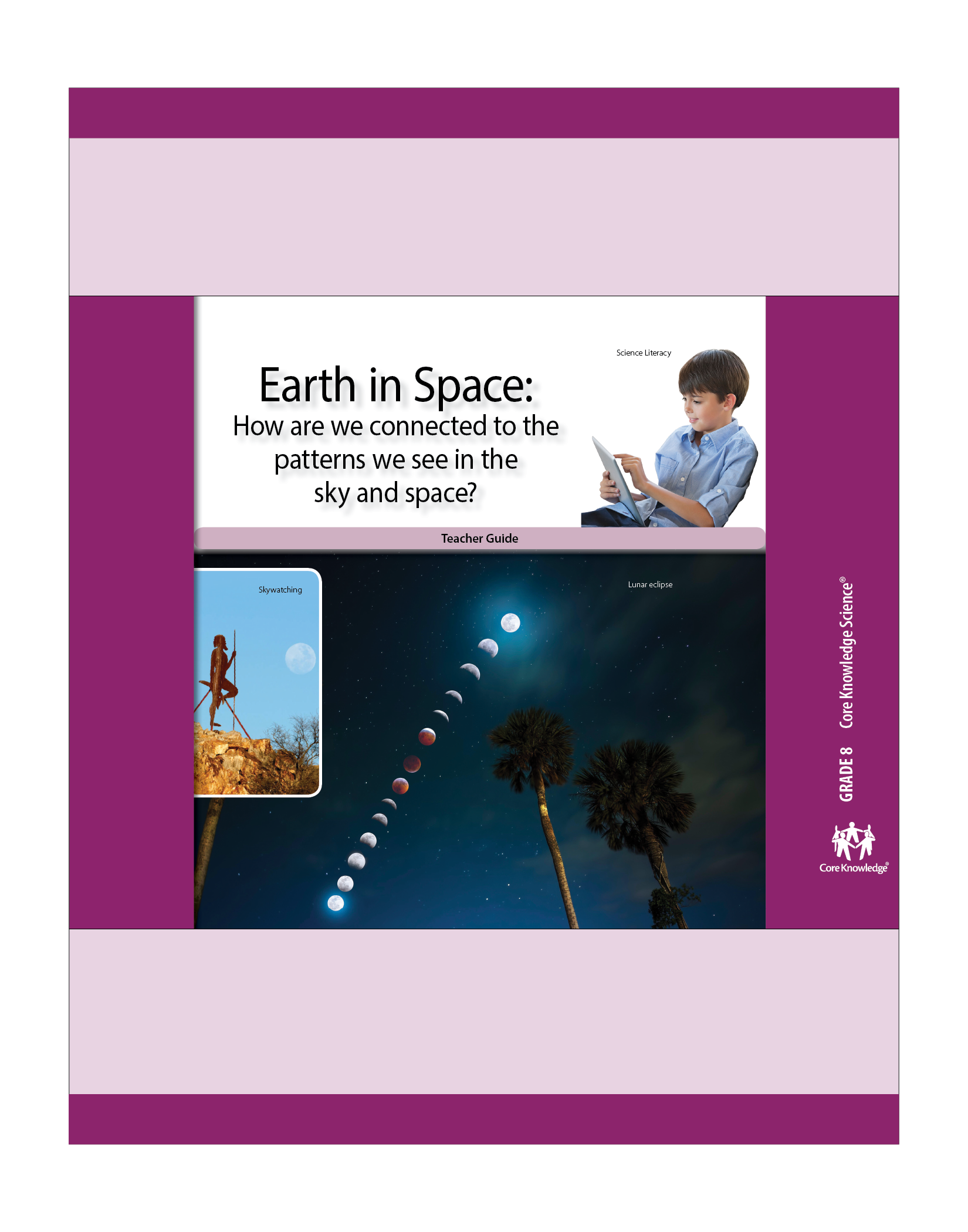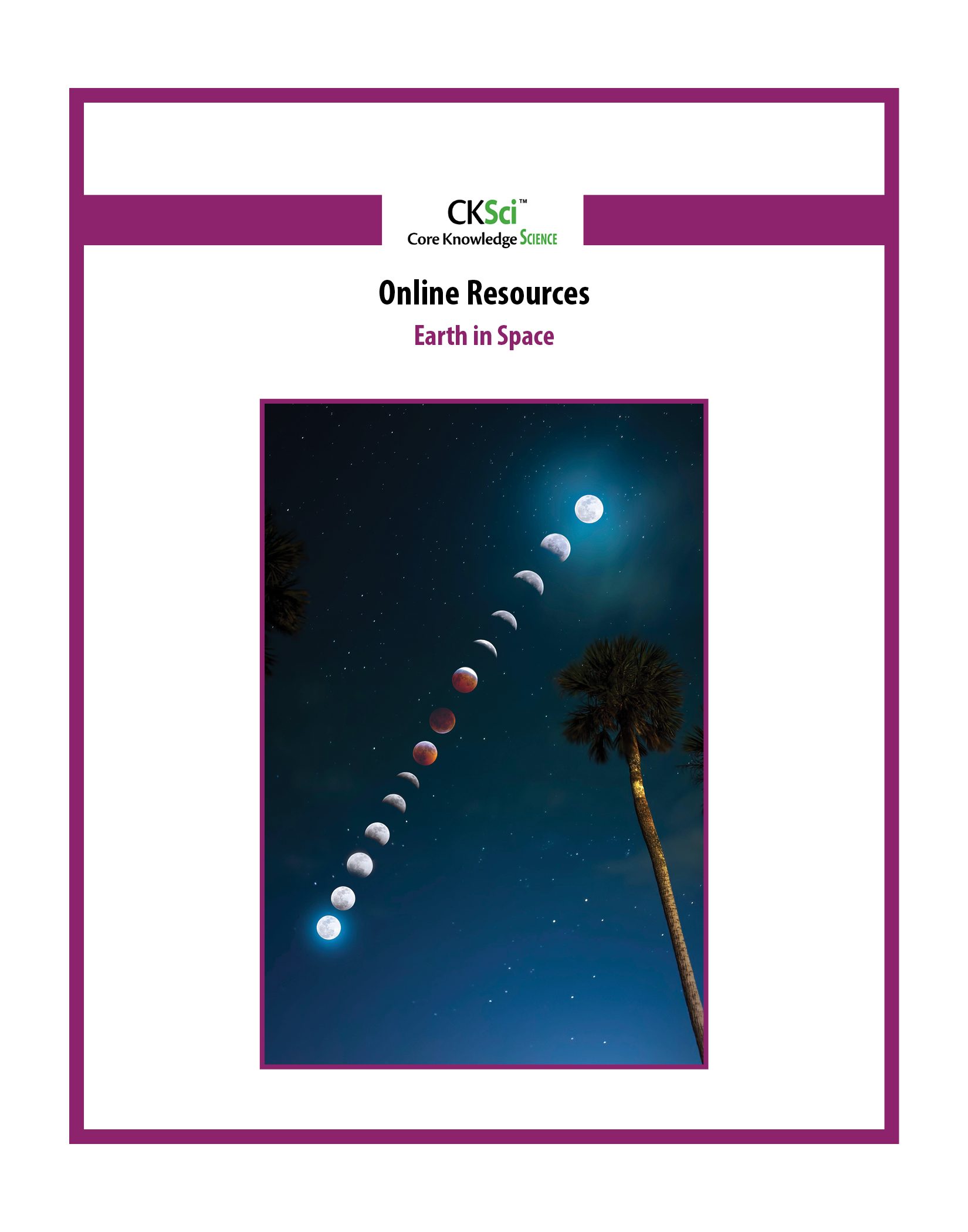
CKSci Unit 4: Earth in Space
Focus:
In this unit, students investigate the phenomenon of the sky, the stars, and Earth as a planet in our solar system. The subtitle of this unit is How do we connect to the patterns we see in the sky and space? Phenomena such as the apparent movement of the Sun across the sky, the rise and fall of the Moon with its changing phases, and planets that move in the sky are all patterns with which students have some experience. How have other cultures responded to these patterns in the past? Can we predict the movement of the Sun or the phases of the Moon? If so, how can we understand the bases for these patterns? This unit allows students to spend time working with classmates to analyze their shared experience, formulate new questions, and develop new strategies for answering them. Students explore concepts that include the following:
- How can we explain the Sun’s path change over time?
- Why do we see the shape of the Moon change?
- What does a lunar eclipse look like, and how can we explain it?
- Why do the Moon and Sun appear to change color near the horizon?
- How does light interact with matter in the atmosphere?
- How did the solar system get to be the way it is today?
As students move through their day-to-day activities, they will also read Core Knowledge literacy selections. These include factual articles, history of the sciences, art and literature, spotting bad science in the media and advertisements, graphics comprehension, research-type articles, reliability of sources, and other areas of science literacy.
Number of Lessons:
- Teacher Guide: 17 Lessons
- Student Reader: 4 Collections
Instruction Time (Student Reader):
- Lessons are designed to be completed in one or more class periods.
- A Pacing Guide found in Online Resources offers a suggested time to complete the entire unit if class is held each day.
- The entire unit should take about 31 days to complete if class is held each day.
- A complete list of Materials needed to complete the unit is provided in Online Resources.
Additional Search Terms:
science literacy • pattern • telescope • refracting telescope • reflecting telescope • orbit • celestial • artificial satellite • orbit • spectrum • gravitational force • electromagnetic radiation • nonfiction • informational text





